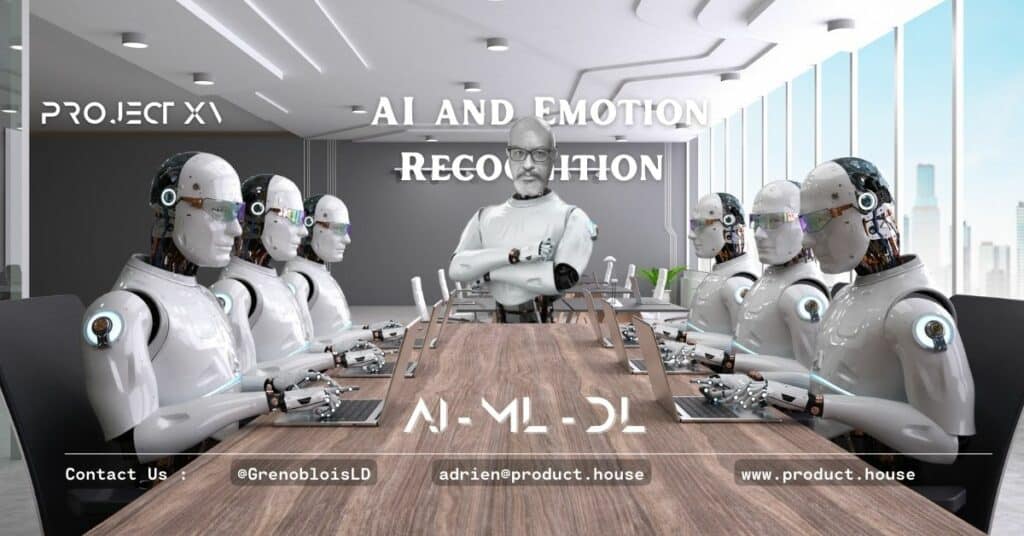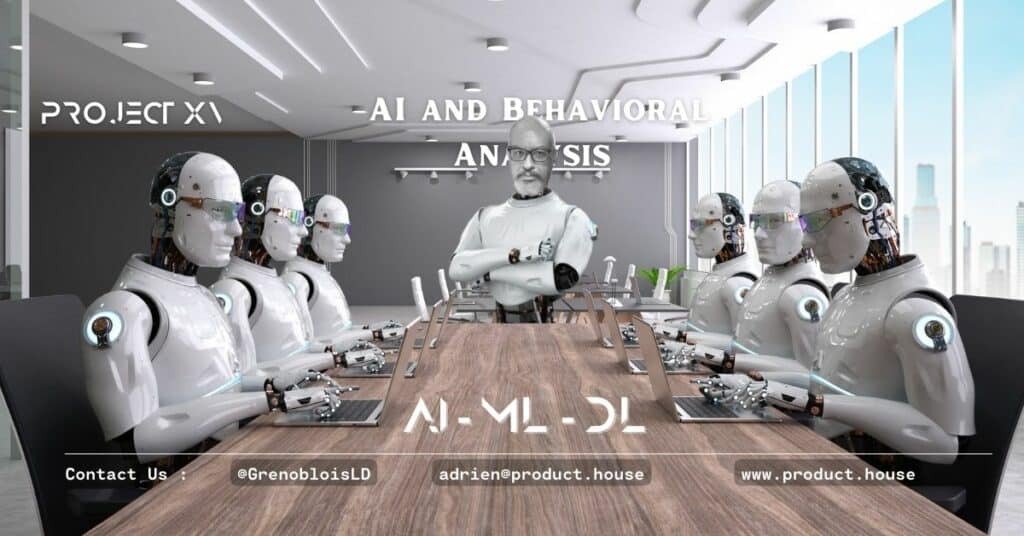AI and Emotion Recognition: Improving Communication and Interpersonal Relationships

Emotions are an essential aspect of human communication and play a crucial role in interpersonal relationships. However, accurately understanding and responding to emotions can be challenging, particularly for individuals with conditions such as autism spectrum disorder or social anxiety. Artificial intelligence (AI) has emerged as a promising solution to this challenge, with emotion recognition technology allowing for more accurate and effective communication.
In this article, we will explore the concept of emotion recognition and its applications in improving communication and interpersonal relationships. We will discuss the underlying technology behind emotion recognition, the benefits and challenges of using AI for emotion recognition, and real-world examples of its implementation.
Understanding Emotion Recognition
Emotion recognition is the process of identifying and interpreting the emotional state of an individual based on their facial expressions, tone of voice, and body language. This process is critical for effective communication and is an essential aspect of social intelligence.
AI and Emotion Recognition Technology
AI has become a powerful tool for emotion recognition, allowing for more accurate and efficient analysis of emotional states. The technology behind AI emotion recognition involves machine learning algorithms that analyze large datasets of facial expressions, vocal tones, and other physiological data to identify patterns and predict emotional states.
Benefits of AI and Emotion Recognition
One of the most significant benefits of AI emotion recognition is its potential to improve communication and interpersonal relationships. For individuals with conditions such as autism spectrum disorder or social anxiety, accurately interpreting emotional cues can be challenging. Emotion recognition technology can provide more accurate and reliable feedback on emotional states, allowing for more effective communication and social interactions.
Challenges of AI and Emotion Recognition
While AI emotion recognition technology has many potential benefits, it also poses several challenges. One of the most significant challenges is the risk of bias in the algorithms used. There is a risk that AI models trained on datasets that are not diverse enough may not accurately represent the emotional states of all individuals.
Real-World Applications of AI and Emotion Recognition
AI emotion recognition technology has many real-world applications, from improving mental health diagnoses to enhancing customer service interactions. One example is Affectiva, a company that provides emotion recognition software for use in advertising, gaming, and healthcare.
Conclusion
AI emotion recognition technology has the potential to revolutionize communication and interpersonal relationships by providing more accurate and reliable feedback on emotional states. While there are challenges to overcome, the benefits of this technology are significant, and we can expect to see more applications of AI emotion recognition in the future.
FAQs:
- What is emotion recognition?
Emotion recognition is the process of identifying and interpreting the emotional state of an individual based on their facial expressions, tone of voice, and body language.
- How does AI emotion recognition work?
AI emotion recognition involves machine learning algorithms that analyze large datasets of facial expressions, vocal tones, and other physiological data to identify patterns and predict emotional states.
- What are the benefits of AI emotion recognition?
The benefits of AI emotion recognition include improving communication and interpersonal relationships, enhancing mental health diagnoses, and improving customer service interactions.
- What are the challenges of AI emotion recognition?
Challenges of AI emotion recognition include the risk of bias in the algorithms used and ensuring that AI models are diverse enough to accurately represent the emotional states of all individuals.
- What are some real-world applications of AI emotion recognition?
Real-world applications of AI emotion recognition include healthcare, advertising, gaming, and customer service interactions. For example, Affectiva provides emotion recognition software for use in advertising and gaming, while companies such as Cogito and Koko use AI emotion recognition technology to improve mental health diagnoses and provide therapy. In customer service, companies like Talkspace use AI emotion recognition to analyze conversations and provide feedback on tone and language use. - How can AI emotion recognition benefit individuals with conditions such as autism spectrum disorder or social anxiety?
For individuals with conditions such as autism spectrum disorder or social anxiety, accurately interpreting emotional cues can be challenging. Emotion recognition technology can provide more accurate and reliable feedback on emotional states, allowing for more effective communication and social interactions. - Is there a risk of bias in AI emotion recognition algorithms?
Yes, there is a risk of bias in AI emotion recognition algorithms if the datasets used to train the models are not diverse enough. For example, if a dataset used to train an AI model includes mostly data from one ethnic group, the model may not accurately represent the emotional states of individuals from other ethnic groups. - Can AI emotion recognition technology replace human empathy and emotional intelligence?
No, AI emotion recognition technology cannot replace human empathy and emotional intelligence. While AI can accurately recognize emotional states, it cannot fully understand the context or nuances of human emotions. - What are some ethical concerns related to AI emotion recognition technology?
Ethical concerns related to AI emotion recognition technology include data privacy and the potential for the technology to be used for nefarious purposes, such as emotional manipulation. - What is the future of AI emotion recognition?
The future of AI emotion recognition is promising, with potential applications in fields such as healthcare, education, and entertainment. However, there is a need for continued research and development to address challenges such as bias and ethical concerns.
List of Resources:
- “Emotion Recognition using Facial Landmarks, Python, DLib and OpenCV,” by Sourav Johar, Medium, 2020. This tutorial provides an overview of using Python, DLib, and OpenCV to build an emotion recognition model.
- “Emotion Recognition: A Pattern Analysis Approach,” by Carlos Busso, Zhigang Deng, Serdar Yildirim, Murtaza Bulut, Chul Min Lee, Abe Kazemzadeh, Sungbok Lee, Ulrich Neumann, and Shrikanth S. Narayanan, IEEE Transactions on Affective Computing, 2014. This paper provides an overview of pattern analysis approaches to emotion recognition.
- “A Survey on Deep Learning for Multimodal Data Fusion,” by Mohammadreza Balouchi and Saman Haratizadeh, International Journal of Machine Learning and Computing, 2019. This paper provides an overview of using deep learning for emotion recognition in multimodal data.
List of Books:
- “Emotion Recognition Using Speech Features,” by Khurshid Ahmad and Yannis Stylianou. This book provides an overview of using speech features for emotion recognition.
- “The Emotion Machine: Commonsense Thinking, Artificial Intelligence, and the Future of the Human Mind,” by Marvin Minsky. This book explores the relationship between emotion, thought, and artificial intelligence.
- “Artificial Emotional Intelligence,” by Jordi Vallverdu. This book provides an overview of the field of emotional artificial intelligence and its applications.
List of Relevant Experts:
- Rana el Kaliouby, co-founder and CEO of Affectiva.
- Björn Schuller, professor at the University of Augsburg and a leading expert in the field of multimodal emotion recognition.
- Marian Bartlett, research professor at UC San Diego and co-founder of Emotient, a company that provides emotion recognition software.
List of Examples of Use:
- Affectiva provides emotion recognition software for use in advertising and gaming.
- Cogito and Koko use AI emotion recognition technology to improve mental health diagnoses and provide therapy.
- Talkspace uses AI emotion recognition to analyze conversations and provide feedback on tone and language use.
Glossary of Key Terms:
- Emotion recognition: the process of identifying and interpreting the emotional state of an individual based on their facial expressions, tone of voice, and body language.
- Machine learning: a type of AI that involves training algorithms on data to identify patterns and make predictions.
- Bias: a tendency for AI algorithms to produce results that are skewed in favor of certain groups or individuals, often due to imbalanced or inadequate training data.
- Facial landmarks: key points on the face used to identify facial expressions and emotions.
- Multimodal data: data that includes multiple types of information, such as facial expressions, vocal tones, and physiological data.
Quiz Questions:
- What is emotion recognition?
- What is the technology behind AI emotion recognition?
- What are the benefits of AI emotion recognition?
- What are some real-world applications of AI emotion recognition?
- Is there a risk of bias in AI emotion recognition algorithms?
- Can AI emotion recognition technology replace human empathy and emotional intelligence?
- What are some ethical concerns related to AI emotion recognition technology?
- What is the future of AI emotion recognition?
- What is machine learning?
- What is facial landmarks?





